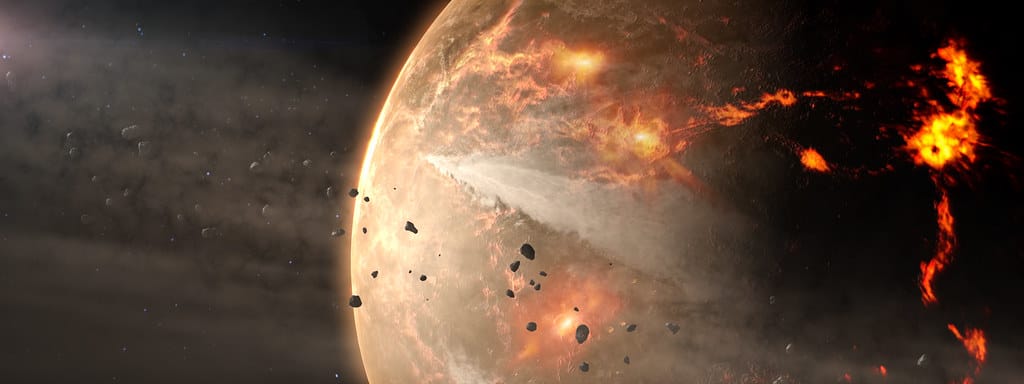When Asteroids Miss Earth but Threaten the Moon: The 2032 Scenario Scientists Are Watching
A near-Earth asteroid that safely passed our planet in late 2024 has astronomers calculating a troubling new trajectory—one that could send it crashing into the Moon within the next decade.
Asteroid 2024 YR4, roughly the size of a city block at 150 meters across, made headlines in December 2024 when it zipped past Earth at just 384,000 kilometers—closer than our Moon's average distance. While humanity breathed a collective sigh of relief, new orbital calculations suggest this celestial visitor isn't done with our neighborhood yet.
The 2032 Lunar Impact Scenario
Recent trajectory models from NASA's Jet Propulsion Laboratory indicate a 15% probability that 2024 YR4 could collide with the Moon sometime between March and July 2032. Unlike Earth, which benefits from its protective atmosphere that burns up smaller asteroids, the Moon's lack of atmospheric shielding means any impact would strike the surface at full force.
"We're dealing with an object that packs the energy equivalent of roughly 50 Hiroshima bombs," explains Dr. Maria Santos, a planetary defense specialist at the European Space Agency. "While that's not catastrophic for Earth, a lunar impact of this magnitude would create a spectacular light show and potentially shower our planet with lunar debris."
What Would Actually Happen?
The Impact Event
If 2024 YR4 strikes the Moon, it would create a crater approximately 2-3 kilometers wide and half a kilometer deep. The impact would occur at speeds exceeding 17 kilometers per second, instantly vaporizing the asteroid and excavating millions of tons of lunar rock and dust.
The flash from the collision would be visible to the naked eye from Earth, appearing as a brief, brilliant star in the lunar landscape. Amateur astronomers with telescopes would witness the formation of a new crater in real-time—a once-in-a-generation astronomical event.
Earth's Night Sky Transformation
The most immediate effect for Earth would be visual. The impact would eject a massive plume of debris into space, some of which could create spectacular meteor showers lasting several weeks. These "lunar meteors" would streak across our night sky as chunks of Moon rock burn up in our atmosphere.
However, larger debris poses a more serious concern. Computer simulations suggest that fragments weighing several kilograms could survive atmospheric entry, potentially creating meteorite falls across multiple continents.
Historical Context and Precedent
Lunar impacts aren't unprecedented. In 2013, astronomers observed a meteoroid strike that created a flash visible from Earth and left a 40-meter crater. But 2024 YR4 represents something far more significant—roughly 1,000 times more massive than typical lunar impactors.
The last comparable event occurred in 1178 CE, when medieval chroniclers reported seeing "fire, hot coals, and sparks" on the Moon's surface. Modern scientists believe this historical account describes a major asteroid impact that may have created the 22-kilometer-wide Giordano Bruno crater.
Scientific Opportunities and Concerns
Research Goldmine
For the scientific community, a 2032 lunar impact would represent an unprecedented research opportunity. The event would provide real-time data on large-scale impact dynamics, lunar composition, and debris dispersal patterns—information crucial for planetary defense strategies.
Multiple space agencies are already discussing coordinated observation campaigns, including positioning spacecraft to capture high-resolution footage of the impact and its aftermath.
Space Infrastructure Risks
The growing concern centers on our expanding lunar economy. By 2032, several nations and private companies plan to have permanent installations on the Moon. NASA's Artemis Base Camp, China's lunar research station, and commercial mining operations could all face debris hazards from the impact.
"We're entering an era where the Moon isn't just a distant celestial body—it's becoming humanity's second home," notes Dr. James Chen, director of the International Lunar Safety Consortium. "Any major impact event now carries real economic and human safety implications."
Looking Ahead: Preparation and Monitoring
While the 15% probability leaves an 85% chance that 2024 YR4 will miss the Moon entirely, space agencies aren't taking chances. Enhanced tracking systems are monitoring the asteroid's trajectory with unprecedented precision, and contingency plans are being developed for lunar installations.
The 2024 YR4 scenario serves as a stark reminder that space is far from empty, and as humanity expands beyond Earth, we must prepare for cosmic events that once seemed purely academic. Whether it strikes the Moon or sails harmlessly past, this asteroid has already changed how we think about planetary defense in our multi-world future.
